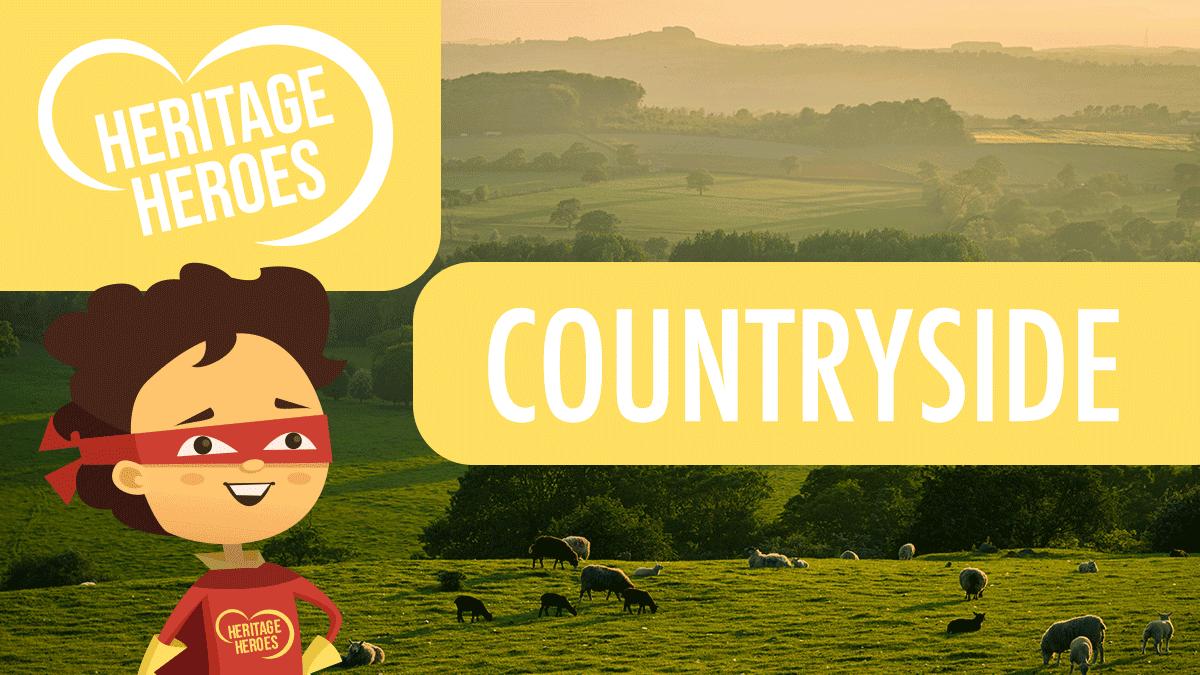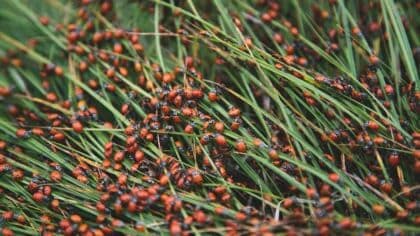Wherever you live, there’s treasure to be discovered!
Not just gold and gems, but stories of buildings, locations and people.
Our heritage is a great wealth… and it’s all around us. Sometimes standing proud in the open air – sometimes hidden behind some bushes.
And to help find it, we’re looking for Heritage Heroes – could you be one?
You can find clues in all sorts of places to find out what happened in your street, neighbourhood and further afield, from famous visitors to historic events.
Here are three tips to help you become a Heritage Hero…

HERITAGE HEROES. AN INSPIRING AUDIO PRODUCTION FOR FUN KIDS. MADE POSSIBLE WITH THE NATIONAL LOTTERY HERITAGE FUND, WITH THANKS TO NATIONAL LOTTERY PLAYERS.
Countryside History
Now, whilst less than 20% of the population today live and work in the countryside, before the Industrial Revolution and the explosion of towns and cities, the UK was largely rural – so even if you live in a busy urban setting, it would have looked very different a few centuries ago.
At the start of the 19th Century, our towns and cities were much MUCH smaller – after all, the UK population was only 9 million in 1801, compared to 67 million in 2021.
Most of where we live today was open fields, orchards and common land.
Orchards
For hundreds of years, orchards played an important economic and social role everywhere we lived. And in London we can see this by some place names like Perivale which means “pear tree valley” and Plumstead meaning “place of plum trees”.
If you have a look at historical maps, you’ll see orchards all over London, even in the City centre!
But during the 19th century large areas of farmland was turned over to brickfields as London’s clay soil was a great building material, pushing food-growing out of the city – a story replicated in towns and cities across the UK.
Maps
Maps are a fascinating way to get a glimpse of the past.
Old maps will show where fields and orchards would have been, as well as farmhouses and old rural settlements.
And if you compare maps of the same area but say at 20 year intervals, you can track urban development, the change of land use and the building of roads and railways, schools and civic buildings.
Farm Buildings
Farm buildings are significant structures that can share lots of heritage.
Barns are usually the oldest and largest buildings on a farm – and every farm would have had one or two… to store harvested crops and provide protection for farm animals.
Some other buildings you can look out for are granaries that dried and stored grain after harvest, pigsties which were common around homes as well as on farms, dovecotes which were often circular towers with conical roofs for housing pigeons and their manure, open-fronted hay barns and cart sheds for protecting carts, wagons and farm implements.
While many old farm buildings will have been demolished, some remain like the Great Barn at Headstone Manor in Harrow which is over 500 years old – it was used to store grain and livestock when Headstone Manor was a working farm, and was the centre of home front activities in the Second World War. Headstone Manor was built around 1310 and is the earliest surviving timber framed house in Middlesex – it’s been described as ‘one of the most interesting domestic complexes in the whole country’. As well as the Great Barn, you can explore… the Small Barn – a Grade II listed building that also dates back to the Tudor period when it would have been used to house livestock; and the early 19th century Granary which was originally constructed at Pinner Park Farm.
Now… whilst a barn itself might not remain, their feet may well still survive! And that’s a clue to something to check out online – search for staddle stones!
These are stones, often shaped like toadstools, that raised farm buildings off the ground, helping keep vermin like rats out and the crops dry. You can see a really great example from the 1700s at the Weald and Downland Open Air Museum in West Sussex.
Why not create a mind map listing all the things you know or can find out about your local area?
Where did I find out my new information?
What is the most interesting thing about my findings?
What else would I like to find out?
Who could I tell about my new information?
Windmills
Windmills use wind power to grind wheat into flour. They used to be everywhere and today some can still be found in surprising urban places – like Chimney Mill in Newcastle which was built in 1782 and was the first 5-sailed smock mill in Britain. There’s even one in Brixton – Ashby’s Mill was built in 1816 and worked by wind until 1862.
www.windmillworld.com lists loads of old windmills – why not see if there’s one near you and maybe take a visit.
Oast Houses
If you live in the South of England, you might want to check out Oast houses.
An oast house is a building designed for drying hops as part of the brewing process. They can be found in most hop-growing areas. They usually have one or two floors, with hot air from kilns drying the hops. Many old oasts have been converted into houses. An early surviving oast house is at Golford near Tunbridge Wells which dates from the 17th century.
Fields
It’s not just buildings that can give us clues to countryside heritage – check out the landscape!
Fields might be enclosed with old dry-stone walls or thick hedges.
They might contain an ancient oak tree that gave shelter to animals… as well as farm workers!
Old fields might still show ridge and furrow lines – a remnant from medieval strip farming.
Now it’s over to you! Here’s a reminder of things to look for to help you find out about the place where you live.
1 – Go along to your local library or look online at old maps of your area – compare a number to see how land use has changed – and see if you can spot where your house would have been!
2 – Look out for old farm buildings – or even just their feet! Can you see any that look like toadstools? Take a photo or make a sketch.
3 -And have a look at the fields themselves – can you see any evidence of old farming practises.
Here are some helpful links that will help you become a Heritage Hero!
Town Maps: www.townmaps.history.ac.uk/
History of Rural Life: www.merl.reading.ac.uk
Explore the National Archives: www.nationalarchives.gov.uk/
History of Agriculture: www.bahs.org.uk
Learn more about the Doomsday Book: www.domesdaybook.co.uk









